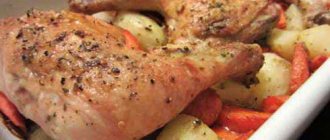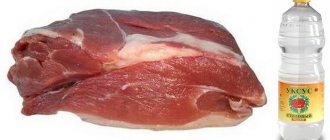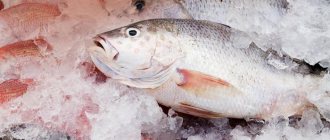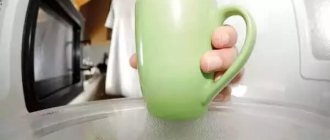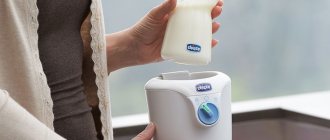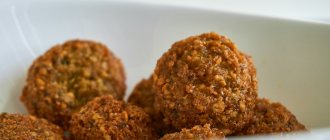Many people cannot imagine their life without a microwave oven. You won’t surprise anyone with this kitchen appliance – it’s in almost every home. But despite this prevalence, the question of using foil in a microwave oven is raised from time to time. Many people, when purchasing ready-made food in supermarkets, doubt whether it can be heated in the foil containers sold, and wonder how safe such packaging is for the appliance and for humans.
Whether it is possible to heat food in foil in a microwave and what material will not harm the equipment, you will learn from our article.
Features of using foil in a microwave oven
What happens if you heat foil in the microwave? Most often, heating this material results in sparks and smoke. Such experiments often end in failure - the device fails without the possibility of recovery . This outcome is caused not only by heating the foil, but also by placing metal objects in the oven.
What manufacturers say
In the microwave oven instructions, most manufacturers indicate that heating food in aluminum packaging is prohibited. Metal objects cause an electric arc, which leads to damage to the microwave.
Attention! Manufacturers also do not recommend placing metal skewers in the microwave oven for stringing food.
To heat food, it is recommended to use dishes made of porcelain, glass, compressed paper or plastic. Housewives also adapted a baking sleeve and paper bags for the microwave.
What to do if a spark occurs
Failure to follow safety precautions and placing metal objects in a working microwave may cause sparks or even a powerful electric arc. If this happens, then first of all you need to immediately turn off the power to the outlet by opening the switch at the entrance to the apartment, and only after that can you turn off the device itself. In this case, it is not advisable to open the door immediately. It will be possible to turn on the electrical appliance only after it has been thoroughly inspected by a service center technician and the malfunction has been eliminated. In some cases, the cost of repairs can be comparable to the cost of new equipment.
Sparks in the microwave
Is it possible to heat food in foil in the microwave?
Heating food in foil in a microwave oven will damage the device. In addition, studies have shown that it is dangerous to human health.
Important! The destruction of aluminum foil can poison food.
When exposed to high temperatures, aluminum molecules enter food. Eating such food can cause poisoning and the development of various diseases.
However, food packaging manufacturers have developed special foil paper that does not harm the device or humans. Products can be covered or wrapped with such foil.
Why do you need baking foil?
Perhaps not everyone knows its properties and scope of application. Its most popular purpose is baking food. Especially meat and fish. Foil is safe even at high temperatures. True, you need to use it correctly. But this is not all that she can help both a young and an experienced housewife.
- Baking food in foil is not only healthy, but also delicious. It also helps to prepare a dietary dish. And the cooking time is significantly reduced. Due to the fact that the liquid in it does not evaporate, the food does not burn. There may be exceptions if you forget about the oven for a long time. But for this you need to try very hard.
- Not everyone knows or even thought that the shiny side is antibacterial. Therefore, you don’t have to worry about the benefits of food cooked in foil.
- And the fact that it is not transparent allows you to preserve as many useful vitamins and elements as possible. Even at high temperatures.
Foil for cooking
- Many people have no idea about freezing food in foil. But she will become a good assistant here too. Foil also withstands low temperatures perfectly, helping to preserve the beneficial properties and appearance of food.
- Foil is great for packing breakfasts or other foods. Another minor use for it. Also, one of its advantages is that it does not absorb odors. And don’t miss the aroma of the packaged product.
- In terms of baking, you can’t do without it either. Every housewife has encountered the fact that the pie can turn out a little dry. The same foil will help to avoid this. Just cover the pie with it. And for a golden brown top, remove the foil 10-15 minutes before removing the dish.
- This aspect does not apply to cooking, but kitchen appliances can be made shiny without any effort. To do this you need a ball of foil and some baking soda. Boil the utensils in this and rinse. The foil will give exactly a mirror shine.
As you can see, food foil has a very wide range of applications. And that's not all she's capable of.
Which foil in the microwave will not harm you?
Although you can use foil paper in the microwave oven, you should not do it too often. Disposable tableware and containers are also made from this material. You can purchase packaging in specialized stores, hardware stores or supermarkets.
The appearance of the paper is similar to foil - the same shiny surface, but the material has a number of advantages.
The difference between foil paper and regular foil:
- she is thicker;
- has increased heat resistance;
- has holes for steam outlet.
Products wrapped in foil paper are protected from overheating. In such packaging you can not only heat, but also cook food. Use the film or form only 1 time.
Important! For cooking fish or meat, it is better to purchase special utensils. Foil paper is used to cover the dish while cooking.
Paper is needed to cover non-standard dishes that do not have a lid. It prevents food from splashing and allows you to keep the device clean. When using the material, it is prohibited to secure it to the sides of the cookware with metal clips. To fix the paper, use special rubber rings or adhesive tape.
Can foil paper be used to defrost food? Yes, this packaging is suitable for preparing frozen foods. It is important to ensure that the paper does not touch the walls of the oven, otherwise sparks and smoke may appear. The optimal distance from the dish to the microwave wall is 2-3 cm.
Attention! To prepare the dish, use foil dishes with a depth of no more than 2.5 cm.
Instructions for using foil paper packaging:
- Remove the top layer of foil - this will help the microwaves penetrate the food.
- Place the opened package in a paper box, if included.
- The dish should fill the container 90-95%.
- Secure the cover with a rubber ring or adhesive tape.
- Place the container in the oven.
- The dishes should not touch the walls of the appliance.
If the microwave has a “Grill” or “Convection” function, food can be cooked in foil containers in a mode with the microwaves turned off.
Packaging manufacturers do not recommend heating several containers at once. When turning the pallet, the boxes will touch the walls, which will lead to the appearance of an electric arc.
Actions to take when an arc occurs:
- Unscrew the plugs or turn off the circuit breaker on the electrical panel.
- Disconnect the microwave oven from the network.
- The door can only be opened 5 minutes after the emergency.
What does the shiny surface of foil reflect?
The explanation about reflection looks plausible: from our school physics course we remember this property of shiny surfaces. But what do they reflect when cooking in the oven?
There are three methods of heat transfer: conduction, convection and thermal radiation. When cooking in the oven, the last two are crucial, since neither the baking sheet nor the foil are in direct contact with the heating elements.
Convection
In the oven, heat is transferred to the product from the heating elements due to the movement of air. Convection is present in any oven, and not just in the one that has this word in its name. When we talk about a convection oven, we mean a fan that moves heated air faster.
A shiny (or matte) surface does not affect convection. The foil will heat up regardless of which side it comes into contact with the product and transfer this heat.
What will matter more in this case is how tightly the foil is wrapped around the contents. If air remains between the product and the aluminum sheet, it can act as an insulating barrier and slow down heat transfer.
Thermal radiation
Convection is of greatest importance when cooking in the oven, but some of the heat transfer is due to radiation. It is emitted by any object with a temperature above absolute zero (−273.15 °C), that is, all elements of the oven and all its contents.
For infrared radiation, the side of the foil will matter: the shiny surface reflects the rays, the matte surface catches them. But this difference in heat transfer is important only for highly sensitive devices. The side of the foil will have little effect on the speed of cooking dinner.
Can you put it in the microwave?
It is not recommended to place other objects on the microwave. Experts recommend installing a microwave oven in the kitchen so that it is away from the TV, radio or antenna, because interference may occur in the image and broadcast.
Interesting materials:
Where can I work with a diploma as an educational psychologist? Where can you work with a degree in political science? Where can I work as a defectologist? Where can you work as a mystery shopper? Where can you work as a makeup artist? Where can you see the works of Rafael Santi? Where are desktop files stored on your hard drive? Where can I find a working battery in Day R? Where is the Windows 7 desktop background? Where can you not work with a tattoo?
Opinion of manufacturers and experts
In 2006, the European Foil Association (EAFA) officially approved the use of this material in microwave devices. The expert opinion was formed on the basis of numerous experiments showing that products made from thin aluminum film do not pose a danger either to the ovens themselves or to the food being heated. Also, studies have shown that using this material to prepare certain dishes provides some benefits.
If, despite all the recommendations, doubts arise about the suitability of special types of dishes or materials for heating in the microwave, experts recommend conducting a simple experiment. To do this, you will need to place the item in the microwave, following safety rules, place a glass cup filled with water next to it, and then turn on the device for 60 seconds. If after a minute the water in the glass becomes warmer, but the object remains cold, then you can safely heat food in it.
Why is foil needed?
Foil paper allows you to prepare delicious and healthy dishes. Any product wrapped in foil retains its natural moisture, making the finished dish juicy. During the baking process, the products do not come into contact with the hot surface, which means vitamins and other beneficial substances remain in the food.
Fish baked in foil
The outer glossy side is coated with an antibacterial substance. This means that any food wrapped in foil paper will be healthy. Vitamins and microelements of meat fillet, vegetables or seafood are preserved in foil due to the opacity of the film. Also, aluminum-coated paper can be used to freeze food. This wrapper does not allow moisture or odors to pass through and preserves any dish for quite a long time.
Meat in foil
TOP 5 analogues of foil for baking in the oven
There are many alternative materials that can be used instead of baking foil. The product must meet a number of requirements:
- heat resistance;
- safety (absence of harmful components in the composition);
- strength;
- taking the desired form;
- ease of use.
So, what can you replace foil in the oven with? Best suited:
- parchment;
- sleeve for baking;
- greased mold with lid;
- silicone food mat;
- plain paper, generously greased with oil.
Each of these options has its pros and cons. They must be taken into account when choosing a product. Different materials are suitable for preparing different dishes.
Parchment paper
Parchment is the first thing that comes to mind if you don’t have foil for baking. This material perfectly protects food from burning and retains moisture well. Therefore, the dishes come out juicy. But you need to understand that parchment is not particularly practical. It's hard to bend. The material tears and cracks if it is of low quality. Therefore, parchment should be used only in extreme cases.
Advantages:
- ensures the creation of a golden brown crust;
- reliably protects the dish from burning on the bottom;
- affordable price;
- Suitable for reusable use.
Flaws:
- difficulties with application;
- After use, the parchment must be thrown away.
Sleeve for baking
It is most often used when there is no foil. This is an ideal option to replace such material. After all, it performs all the necessary functions: it maintains juiciness and protects from burning. All products that need to be baked are placed in the sleeve. The edges are tied with ribbons that come with the kit. It is recommended to puncture several holes to provide ventilation and prevent the bag from bursting. After this, the dish can be sent to the oven. A few minutes before cooking, it is recommended to open the sleeve so that the food browns and becomes more appetizing.
Advantages:
- strength;
- completely covers the dish;
- acceptable price.
Flaws:
- suitable for single use;
- does not always protect against burning from below;
- After cooling, the dish sticks to the baking sleeve.
Oiled mold with lid
If you don't have foil, a regular baking dish will do. Its inner surface must be lubricated with vegetable oil. Then the dish will not burn. And in order for it to preserve its aroma and juiciness, it is better to cover the form with a lid. This substitute for baking foil is the most profitable and economical. After all, you won’t have to buy any other products like parchment or a silicone mat.
Advantages:
- prevents burning from below well;
- high strength.
Flaws:
- suitable for reusable use;
- high-quality products are not cheap;
- if there is no lid, then the dish on top may burn.
Silicone food mat
The silicone mat is only suitable as a substrate. It protects baked foods from burning and the baking tray from contamination. It is usually used for preparing desserts and baking cake layers. But you can bake fish, vegetables, and meat on it. You must be prepared for the fact that the top of the dish may burn a little. The product will lose its juiciness. It is advisable to use a silicone food mat only for preparing fatty dishes.
Advantages:
- reliably protects against burning;
- strength;
- reusability.
Flaws:
- high-quality products are not cheap;
- does not allow you to cover the dish from above;
- not particularly suitable for cooking fish and meat, as the dishes lose their juiciness.
Oiled paper
Plain paper can also be used to replace baking foil. But it must first be soaked in vegetable oil. Place the paper on a baking sheet or frying pan. It prevents the food from burning. In addition, you can completely wrap food in paper. To do this, it should be wrinkled to give it elasticity.
Advantages:
- economical (plain paper and oil are available in every home);
- ease of use;
- protects well from burning.
Flaws:
- plain paper may stick to the dish;
- it is difficult to give the material the required shape;
- paper soaked in oil often tears.


